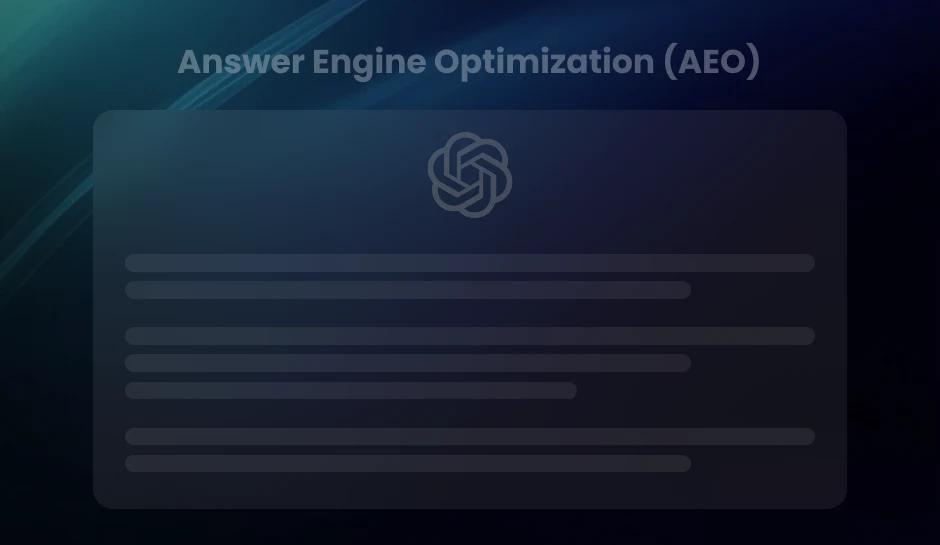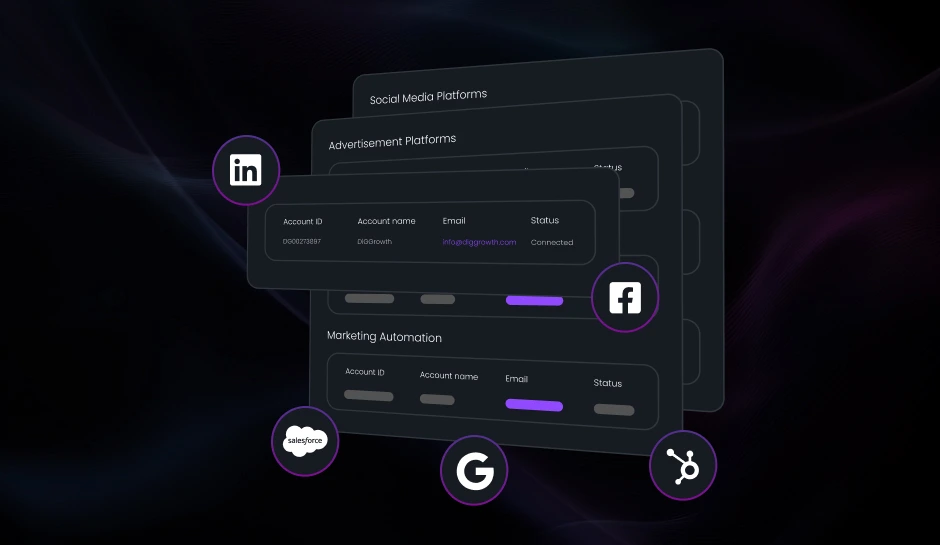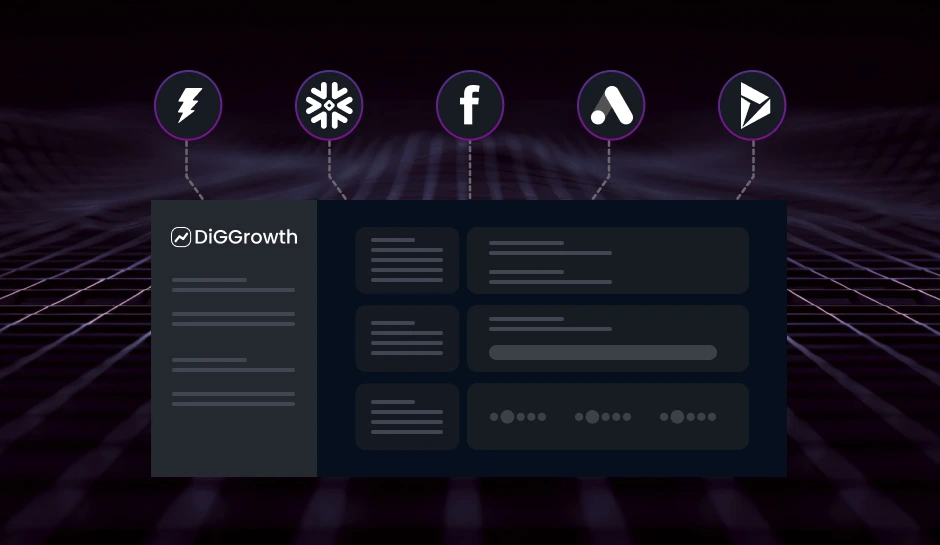
AI-Powered Data Visualization Is Redefining Who Wins in Business
AI-powered data visualization is revolutionizing how businesses analyze and act on data. This article explores how AI helps transform raw data into valuable insights for smarter decisions and better business outcomes.
Your Dashboard Is Not Enough Anymore—Here Is What Is
Think about the last time your team made a major decision. Was it based on clear, timely insight, or a patchwork of reports, guesswork, and a few gut feelings?
The reality is, most dashboards were not built for the speed or complexity of today’s business environment. They show what happened yesterday but offer little direction for what to do next. That is why more companies are turning to AI-powered data visualization. It does not simply present data. It analyzes it, interprets patterns, and delivers real-time insights that support confident, well-informed decisions.
This shift is transforming how businesses operate and compete. The advantage no longer lies in how much data you have but in how intelligently you can use it. With AI-powered data visualization, you are not just reporting on performance, you are planning, predicting, and responding with precision.
In this blog, we will explore how AI-powered data visualization is helping businesses lead with clarity, act with speed, and make smarter decisions where it matters most. Stay with us as we uncover why this capability is becoming essential for forward-thinking teams.
What Is AI-Powered Data Visualization and Why Now?
AI-powered data visualization uses artificial intelligence to turn complex data into clear, actionable visuals. Unlike traditional dashboards that simply display past performance, AI identifies patterns, spots anomalies, and surfaces insights in real time.
It reduces manual analysis, highlights what matters most, and helps decision-makers act quickly with confidence. This is not just about viewing data—it is about understanding what it means and what to do next.
The urgency comes from the pace of business today. Markets shift faster, data volumes are growing, and decisions cannot wait. Relying on static reports slows teams down. AI-powered data visualization solves this by delivering insight at the speed of business, with context that supports strategic decisions.
For companies that want to stay competitive, this is no longer optional. It is becoming a core part of how modern organizations operate and lead.
How AI Turns Raw Data into Actionable Insight
Data on its own is not valuable until it becomes something you can understand and act on. AI-powered data visualization bridges that gap by doing what manual analysis canno, tit processes vast volumes of data at scale, instantly uncovering insights that are often hidden in plain sight.
Instead of combing through spreadsheets or relying on static charts, AI helps you see what truly matters. It identifies emerging patterns, detects anomalies before they become problems, and reveals correlations that inform better decisions. These are not just surface-level observations. They are signals that guide action.
Equally important is how these insights are delivered. AI systems now use natural language generation (NLG) to turn complex data points into clear, business-ready narratives. Rather than presenting raw numbers, they explain what those numbers mean in real-world terms. For example, you are no longer just told that customer churn increased, you are told why, where, and what to do about it.
The result is faster, clearer, and more confident decision-making, without needing a data science degree to get there.
Rethinking the Dashboard: Smart Visuals That Evolve With You
Dashboards have long been central to decision-making, providing teams with data-driven insights briefly. However, traditional, static dashboards have limitations. They present a snapshot of the past, but often fail to provide the dynamic insights needed to inform timely, forward-looking decisions. This is where AI-powered data visualizations come in.
Unlike static dashboards, AI-enabled visualizations evolve with your data, learning from your interactions, and adapting over time. They automatically surface the insights that matter most to you and present them in a way that evolves with the business landscape.
What Has Changed?
Traditional dashboards have their place, but they rely heavily on manual setup and constant updates. They are not flexible and often only reflect historical data. In contrast, intelligent dashboards powered by AI understand user behavior and adapt in real time, helping you make more informed decisions quickly and with less effort.
Here is a comparison of static versus AI-powered intelligent dashboards:
| Aspect | Traditional Dashboards | AI-Powered Intelligent Dashboards |
|---|---|---|
| Information Display | Display the same information for all users | Customize views based on individual user roles and preferences |
| Data Configuration | Require users to manually filter and configure data | Automatically update views with relevant data without manual input |
| User Behavior | Do not account for user behavior | Learn from user interactions to enhance data relevance over time |
| KPIs | Provide a fixed set of KPIs | Adapt KPIs and metrics based on changing business needs |
How AI Learns and Adapts to Your Needs
AI-powered dashboards become more useful over time as they learn from your interaction patterns. The more you use them, the more they adapt, providing insights based on your specific needs and preferences.
- A CFO could receive real-time financial forecasts and early warnings about cash flow issues without having to manually adjust settings.
- A CMO could have campaign attribution models, audience engagement insights, and marketing KPIs automatically surfaced based on recent data trends, without needing to filter reports.
- A sales leader could be alerted if pipeline performance shows signs of stagnation, and receive recommendations to adjust outreach strategies.
Pro Tip-Encourage your team to engage frequently with AI-powered dashboards. The more they interact with the system, the better it learns and delivers relevant insights. Integrate these dashboards into regular business reviews to ensure they support both immediate and strategic goals.
The New Decision-Making Edge: Speed, Accuracy, and Relevance
Quick decisions are only valuable when they are right. That is why the combination of speed, accuracy, and relevance has become essential for competitive businesses, and AI-powered data visualization sits at the center of this transformation.
You are not just dealing with more data than ever before. You are dealing with faster markets, shifting customer behavior, and rising performance expectations. The difference between reacting too late and leading ahead often comes down to how quickly and clearly your data speaks.
Why This Matters to Your Business
Speed Gives You A First-mover Advantage
With AI, insight is delivered as events happen, not days later. This lets you act while the window of opportunity is still open. For example, a retail team can adjust pricing in response to sudden inventory shifts, or a SaaS team can intervene when user activity drops, all before traditional reporting would even surface the issue.
Accuracy Reduces Risk And Second-guessing
AI models process vast datasets, identify patterns, and remove outliers that cloud decision-making. This leads to more reliable recommendations. Instead of overcorrecting based on anomalies or outliers, you are responding to actual trends. It is how operations managers avoid delays, how CFOs stay ahead of budget risks, and how product teams ship smarter.
Relevance Makes Decision-making Collaborative And Focused
Not everyone needs the same insights. AI-powered platforms tailor dashboards to what each stakeholder needs to see. The COO focuses on throughput. Sales leaders see pipeline velocity. Customer success tracks churn risk. This alignment cuts meeting time, streamlines planning, and reduces friction across departments.
Barriers and Misconceptions: Why Most Are Still Behind
Many businesses hesitate to adopt AI-powered data visualization, often due to myths or misunderstandings about what AI can do. While the benefits are becoming increasingly clear, these misconceptions create barriers to adoption. Understanding the truth behind these myths is the first step in leveraging the power of AI to drive smarter, data-driven decisions.
Common Myths Holding Companies Back
“We Have BI, We Do Not Need AI.”
Business Intelligence (BI) tools are powerful for tracking past performance and creating static reports, but they lack the predictive power of AI. AI-powered data visualization adds real-time insights, forecasts, and personalized recommendations, helping businesses become more agile and proactive in their decision-making.
“Implementing AI Is Too Complex.”
The perception that AI implementation is difficult often prevents businesses from adopting it. However, many AI tools integrate seamlessly with existing software and business processes. The key to successful integration is selecting the right solution that aligns with your current systems and is user-friendly.
“Our Data Quality Is Not Good Enough for AI.”
While data quality is important, AI models are designed to handle data imperfections. AI algorithms can clean, enrich, and learn from incomplete or messy data, providing valuable insights even with less-than-perfect datasets. Over time, AI learns to improve data quality and accuracy, turning raw data into actionable information.
“AI Implementation Is Too Expensive.”
The upfront cost of implementing AI may seem high, but the long-term savings and efficiency gains far outweigh this. AI reduces manual data processing time, improves decision-making speed, and identifies opportunities that may otherwise be missed. Investing in AI-powered visualization tools is a cost-effective way to stay competitive and make smarter business choices.
The True Barrier: Mindset and Strategy
The real obstacle is not technology, AI solutions are becoming increasingly accessible, with many platforms requiring minimal integration effort. The barrier lies in mindset and strategy. Many businesses still see AI as something complex and reserved for large enterprises. However, AI is becoming a necessity for staying competitive.
Companies that fail to embrace AI-powered visualization risk falling behind in a world where insights must be real-time, accurate, and actionable. It’s not about the tech; it’s about how businesses adapt their strategies to leverage AI and make smarter decisions based on evolving data.
What Winning Looks Like: Building a Data-Driven Culture Around AI
Building a data-driven culture around AI begins with a clear strategy and a commitment to integrating AI into daily business practices. The first step is conducting a data audit to assess the quality and accessibility of your data. This ensures that the information you feed into AI-powered systems is clean and relevant. Following this, businesses need to assess their AI-readiness, considering factors like existing infrastructure, data maturity, and employee skills to ensure a smooth transition.
Choosing the right AI tools is equally important. The ideal tools should be intuitive, scalable, and easily integrate into your existing systems. Once AI tools are in place, businesses need to focus on encouraging adoption by offering user-friendly, insight-driven platforms. These tools should empower users with actionable insights that inform their decisions without overwhelming them with complex data.
In the long term, AI fosters continuous learning loops. As users interact with AI-powered dashboards, the system learns from their behaviour, improving its insights over time. This ongoing evolution drives proactive decision-making, helping businesses to act on data before challenges arise. Furthermore, AI enhances strategic agility, allowing companies to adjust quickly to market changes and stay ahead of competitors. The result is a company that not only keeps pace with industry trends but also anticipates and adapts to them, securing a long-term competitive advantage.
Key Takeaways
- Traditional dashboards fail in today’s fast-paced business world; AI-powered data visualization is essential for real-time decision-making.
- AI analyzes data, identifies patterns, and provides actionable insights to drive smarter decisions.
- Unlike static dashboards, AI-powered tools evolve with user behavior, personalizing insights for each individual.
- Building a data-driven culture involves clean data, assessing AI-readiness, choosing the right tools, and encouraging adoption.
Conclusion
The business landscape is rapidly evolving, and how you manage and utilize your data can determine whether your company thrives or falls behind. AI-powered data visualization has emerged as a game-changer, allowing businesses to make decisions faster, more accurately, and with greater relevance. By embracing this technology, your team can not only react to data but also anticipate future trends and proactively address challenges.
If your organization is ready to move beyond outdated dashboards and leverage the full potential of AI-driven insights, now is the time to act. The benefits are clear, greater agility, smarter decision-making, and a sustainable competitive advantage.
Are you ready to unlock your business’s potential with AI-powered insights? Let’s talk.
Our experts at DiGGrowth can help guide your team through the process of AI integration and empower your decision-making with cutting-edge data visualization. Reach out to us at info@diggrowth.com
Sources
How AI-Driven Data Visualization Is Transforming Business Intelligence
How Is Gen AI Changing the World of Data Visualization? – Salesforce
Ready to get started?
Increase your marketing ROI by 30% with custom dashboards & reports that present a clear picture of marketing effectiveness
Start Free Trial
Experience Premium Marketing Analytics At Budget-Friendly Pricing.

Learn how you can accurately measure return on marketing investment.
Additional Resources
Answer Engine Optimization (AEO): The New Frontier of SEO in 2025
As digital experiences continue to evolve, so does...
Read full post postIntegrating Data from Different Channels for a Holistic View of Your Marketing Performance
Who's your ideal customer? Where do they come...
Read full post postGet Your Channels to Play Nice: Integrated Data for Smarter Marketing
If you’re a savvy marketer, you’re living in...
Read full post postFAQ's
AI-powered data visualization tools can be easily integrated with existing CRM, ERP, or BI platforms through APIs or plug-ins, allowing seamless data flow without disrupting your current systems.
Data security is prioritized with end-to-end encryption, secure cloud storage, and compliance with industry standards like GDPR. AI platforms ensure sensitive business data is protected during processing and visualization.
Most AI-powered dashboards are designed with user-friendliness in mind, offering intuitive interfaces. A minimal learning curve is expected, with training sessions or customer support available to help users adapt quickly.
 Shahzad Mussawir
Shahzad Mussawir  Arpit Srivastava
Arpit Srivastava 

